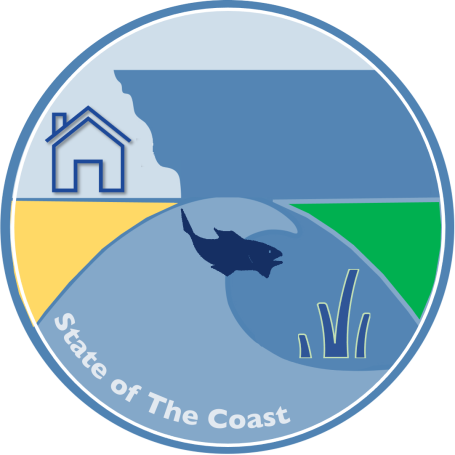Orange ripple bryozoan (Schizoporella japonica)
Key Findings
Bryozoans are colony-dwelling organisms, forming structures out of many microscopic individuals knowns as zooids (Missouri Department of Conservation, 2024). They may live in fresh or salt water, attaching to substrates such as aquatic plants, other creature’s shells, rocks, and litter (Wood, 2010). Orange ripple bryozoan (Schizoporella japonica) is a marine intertidal bryozoan species, often found on rocky substrate or human built structures. It is recognisable by its vibrant orange colour and leaf-like growth pattern (Loxton et al, 2017) (Fig. 1).
Range & Distribution:
Orange ripple bryozoans are native to the coastline between China and northern Japan, but are known to have been introduced to the Western USA, Australia, New Zealand, the UK, Ireland, and Norway (Loxton et al, 2017; Smithsonian Environmental Research Centre, n.d.). Its first appearance in the UK was in Wales in 2010, and was subsequently recorded in Scotland near Orkney in 2011 (Scottish Government, 2020; Ryland, Holt and Loxton, 2014.). As of January 2025, the species has been recorded multiple times in Scotland and Northern Ireland, and only once in both Wales and England respectively (Fig. 2) (NBN Atlas, 2024). Notably, this is an unusual case for the British Isles in which the invasive species is spreading from the north downwards (Loxton et al, 2017). As with most invasive yet physically immobile marine species, orange ripple bryozoans likely made their way to the UK while attached to ships or in ballast water (NNSS, 2017).
Impacts & Management:
Orange ripple bryozoan poses a potential risk to the Scottish oyster and mussel industries. Its growth increases competition for these economically important species and can reduce their market value (NNSS, 2017). It can grow on top of native species and smother them, alongside interfering with aquaculture equipment - reducing its functioning and efficiency (NNSS, 2017; Sewell, 2019). Additionally, the species is easily mistaken for various other species, so early identification of new colonies can be difficult (Sewell, 2019). While recommendations and laws are in place to prevent the spread of invasive aquatic species, there will always be some risk of introductions. Quality biosecurity measures for marine industries are essential to prevent introductions and colony establishments.

Figure 1: An orange ripple bryozoan colony found in Kirkwall Marina, Orkney (Marine Scotland Assessment, 2020).

Figure 2: Distribution of recorded Schizoporella japonica occurrence (2010-2024) (NBN Atlas, 2024).
Notes
Linked Information Sheets
Key sources of Information
Reviewed on/by
27/08/2024 Cathryn Lovie
29/08/2024 Ian Hay
15/01/2025 by Charlotte Tomlinson (updated)
24/01/2025 by Mariia Topol
12/03/2025 by Charlotte Tomlinson
Status
Live - Next update due 09/01/2026
To report errors, highlight new data, or discuss alternative interpretations, please complete the form below and we will aim to respond to you within 28 days
Contact us
Telephone: 07971149117
E-mail: ian.hay@stateofthecoast.scot
